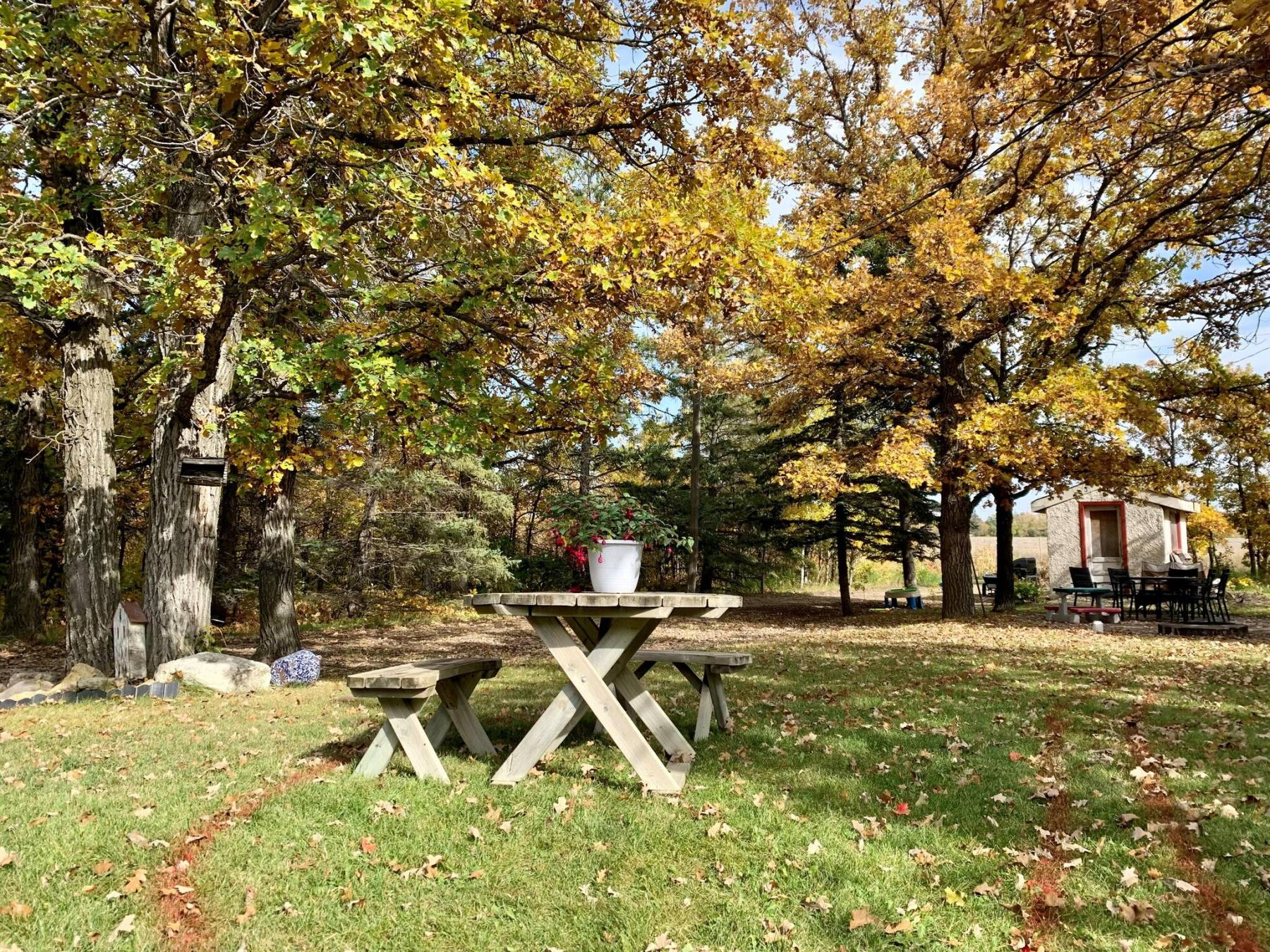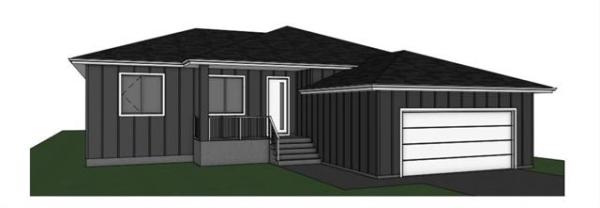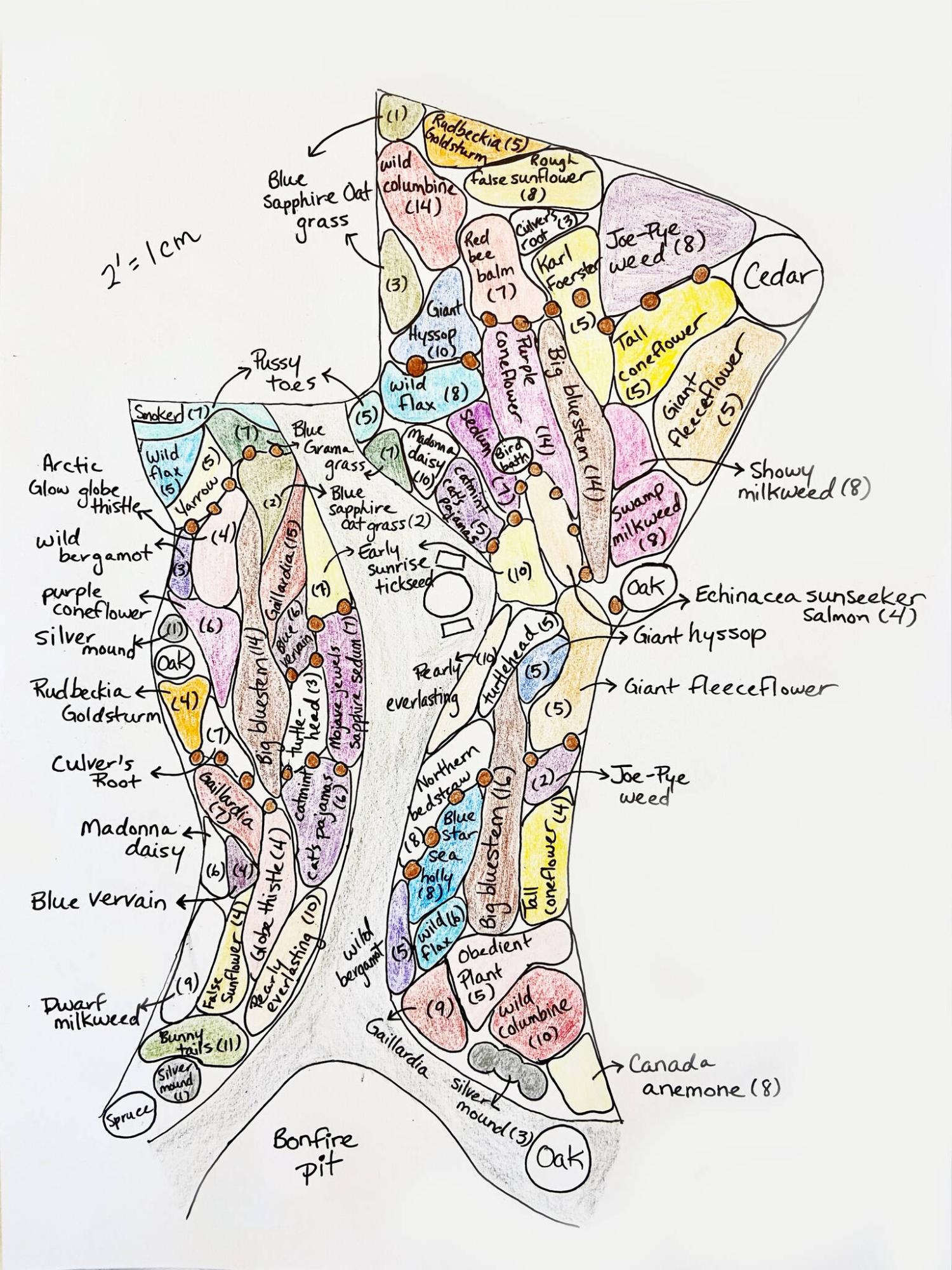
Aimee Kornelsen
Aimee Kornelsen designed her own landscaping plan for a new garden bed that will include more than 400 native plants and cultivars.
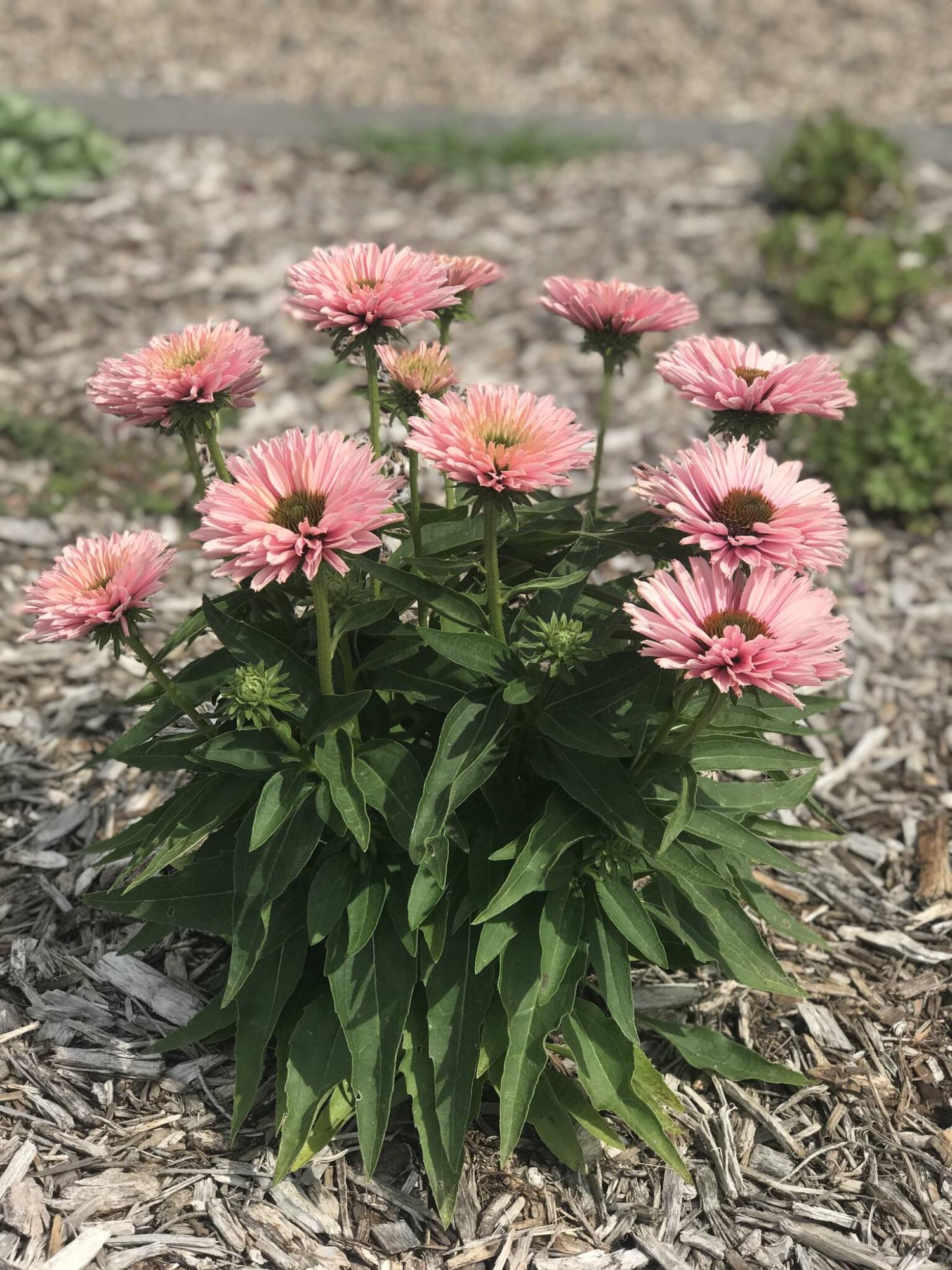
GardenWorld
Echinacea SunSeekers Salmon coneflower is a hardy Zone 3 cultivar. A mulch layer of arborist wood chips helps to conserve moisture.
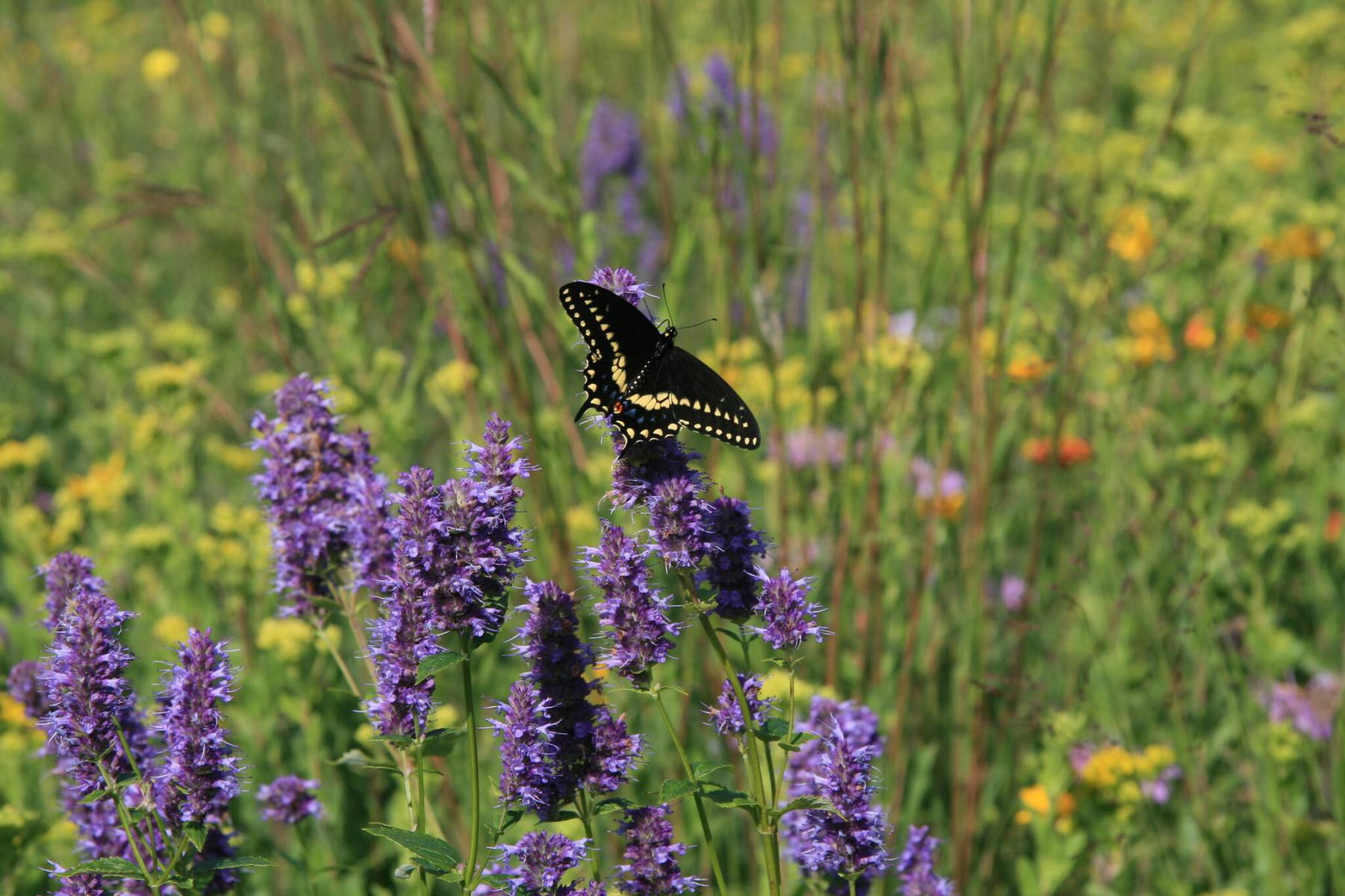
Shirley Froehlich
Giant Hyssop is a native plant that provides nectar for many pollinators such as the Black Swallowtail butterfly.
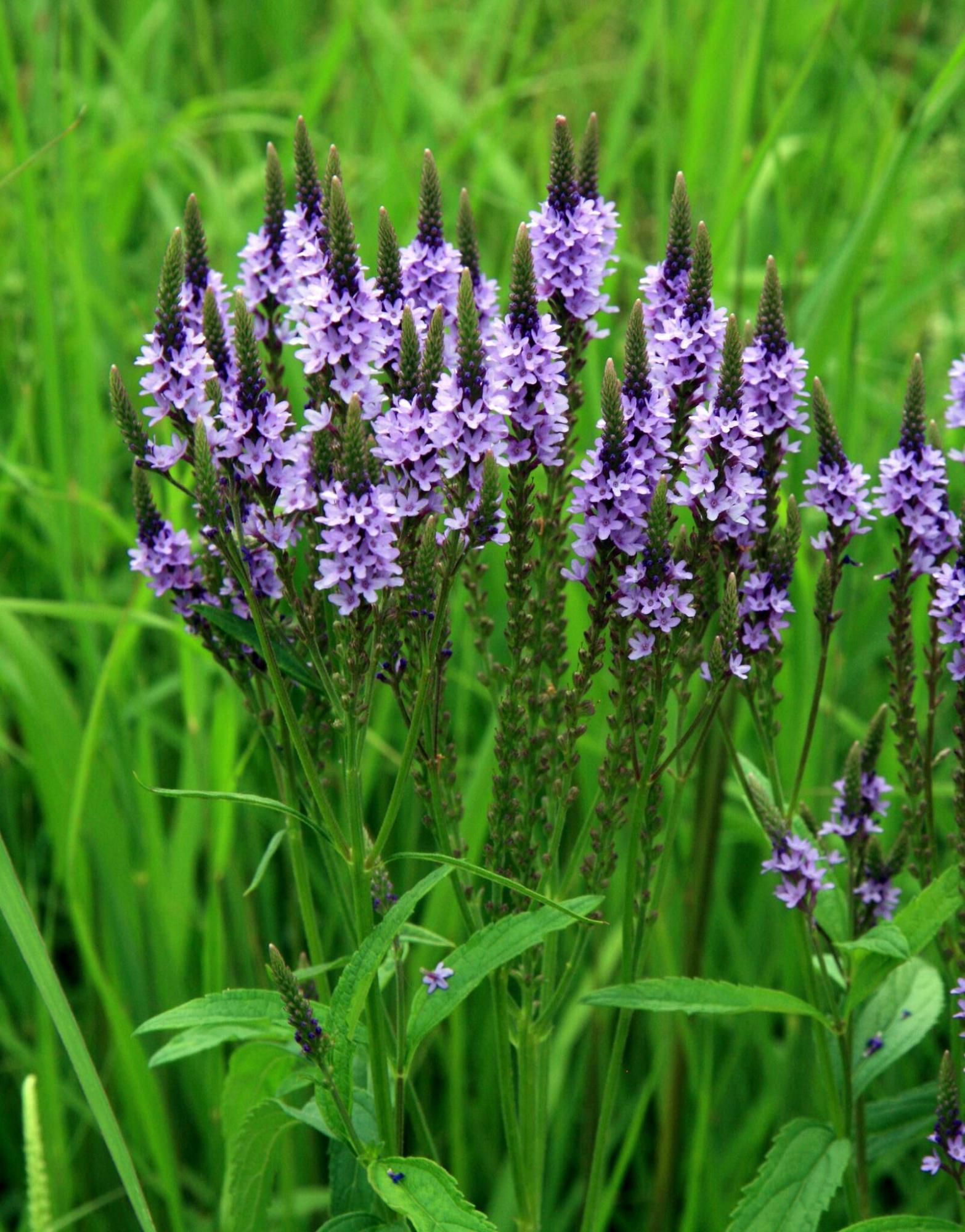
Prairie Originals
Blue Vervain Verbena hastata is native to Manitoba. A self-seeding variety, it has a long bloom period.
Aimee Kornelsen has a plan. She is converting a lawn in her backyard to a prairie garden this spring with more than 400 plant groupings in sweeping masses that will provide year-round sustainable beauty. Curving pathways between combinations of colourful flowering plants in layers of varying heights and textures will invite intimate perspectives and engage visitors. The new garden will be an imaginative setting for her children as they grow up and will inspire them to learn about the important role of bees, butterflies, birds, and other pollinators.
Kornelsen, 38, lives with her husband and two children, ages 4 and 6, on a 3.5-acre property in Stonewall. Her children are the fourth generation of her family who have made their home in Stonewall. Kornelsen loves the area’s landscape and history. Her front yard includes a kiln from an old Stonewall quarry. A science teacher, Kornelsen has a degree in biology and is a nature enthusiast who spends many hours exploring the natural landscape, identifying plant species and observing wildlife. She maintains a large vegetable garden and a small orchard with Saskatoon bushes and apple trees but says she is new to flower gardening.
Last year, while recovering from a broken leg, Kornelsen began researching a diverse mix of native perennials and grasses as well as pollinator-friendly cultivated varieties. She honed her design skills by reading several books found at her local library. She visited native plant nurseries and created spreadsheets with lists of plants and their characteristics, researched the benefits of buying plugs or starting plants from seed, and created a planting scheme that underwent multiple revisions. Kornelsen also enrolled in a couple of online gardening classes offered by the University of Saskatchewan. Last summer she spent time walking through the outdoor gardens at The Leaf in Assiniboine Park where she was inspired by the plant selection. By late September, she and her husband began preparing the site for their new garden to give it the best possible growing conditions.
The area being developed is 2,180 square feet. It is mostly a sunny area framed by large trees. Kornelsen plans to prune the trees by thinning out branches to improve light, rain, and air penetration. After marking out the planting area and pathway last fall, the existing grass was mowed very short. Rather than removing the sod with a sod cutter and hauling it away, she smothered the grass with a six- to eight-inch (15-20cm) layer of arborist wood chips obtained from a local arborist. This is an efficient method that gets the soil ready for planting in time for spring. She also made a gravel pathway that will curve through the garden.
“It was a bit of an undertaking hauling wheelbarrows of gravel with my broken leg,” says Kornelsen. “It was nice that it was a late start to the snow last fall because we were working right to the bitter end.”
In November, Kornelsen dug into the mulch and saw the grass had begun decomposing.
In late winter and early spring, she started numerous plants indoors from seed. Row upon row of healthy seedlings on greenhouse stands in her basement are growing beneath grow lights. She purchased seeds and plugs from Prairie Originals and Prairie Floral. Both nurseries were very helpful, says Kornelsen, and provided her with instructions on how to cold stratify some of the seed varieties. Kornelsen is ready to begin planting just as soon as the soil warms up and there is no risk of frost.
Native plants are important to Kornelsen and her preference is for a natural, relaxed planting style. “Rather than having an area of intermingled plants that would be more similar to what you would find in nature,” says Kornelsen, “the plants will be planned in such a way that there are larger swaths of the same plant species so they stand out more and pull you further into the garden. Many will be the native species that I love like wild bergamot, Big Bluestem grass, purple coneflower, gaillardia blanket flower, Joe Pye weed, and Giant Hyssop, a great nectar plant for many pollinators.”
Big Bluestem (Andropogon gerardi) will have a big footprint in Kornelsen’s garden. She is planting 44. This tall grass grows to four to six feet (1.2-1.8m) and has a distinctive turkey-foot seedhead and stunning reddish-copper fall colour. Giant Fleece Flower (Persicaria polymorpha will also make a big impact with a mature height of five feet (150 cm) and spread of four feet (120 cm). Kornelsen is planting 10 of these and giving each the space they will need as they mature. Groupings of Joe Pye weed, tall coneflower, and turtlehead will provide late season colour and nectar for pollinators.
There are a total of 416 plants. Spring flowering plants include northern bedstraw (Galium boreale) which has showy clusters of fragrant white flowers. Twenty-four wild columbine plants will bloom in June with pink and yellow flowers. The selection of native plants also includes Rudbeckia Black-eyed Susan and Gaillardia blanket flower which have daisy-like flowers. Varieties such as Culver’s Root, Giant Hyssop, and Blue Vervain (Verbena hastata) are known for their spikes of flowers. Blue Vervain is a beautiful perennial wildflower native to Manitoba. It will self seed readily in rich, moist soil and produce blue-violet flowers over a six-week period in July and August.
These will be accented by cultivars such as blue sea holly (Eryngium), Arctic Glow globe thistle (Echinops), and Echinacea Sunseekers Salmon coneflower, a recent introduction that is hardy to zone 3. Sunseekers Salmon has semi-double flowers that emerge salmon-pink with soft yellow petals in the centre. As the blooms mature, large dark crimson cones form. Long blooming cultivars such as Madonna Shasta daisy, Coreopsis Early Sunrise tickseed, Nepeta Cat’s Pajamas catmint, and Mojave Jewels Sapphire sedum will fill in the gaps between blooming times of some of the other species, says Kornelsen.
She has considered the mature size of each plant selection as well as their moisture requirements. “We’re on a well,” says Kornelsen. “Two years ago, when there were severe drought conditions in southern Manitoba, many wells ran dry, so I don’t want plants that require a lot of supplemental irrigation or fertilizer. I will put in the time necessary to establish plants, but I want my garden overall to be mostly low maintenance and drought tolerant.
“I imagine this section of my yard will allow me to host guests, to rest, to read, and to enjoy the peace that plants bring. We won’t need to leave our yard to enjoy the beauty of nature but enjoying the plants in our garden will help us cherish nature more.” She hopes to attract a wide variety of bees, butterflies, and birds to her garden and wants her gardening practices to be beneficial to the environment. “I am beautifying my outdoor space, but I don’t want to just take from the earth, I also want to give something back.”
Kornelsen is also making plans for a flower display next spring and will be planting muscari, snowdrops, and maybe some daffodils in fall.
colleenizacharias@gmail.com

